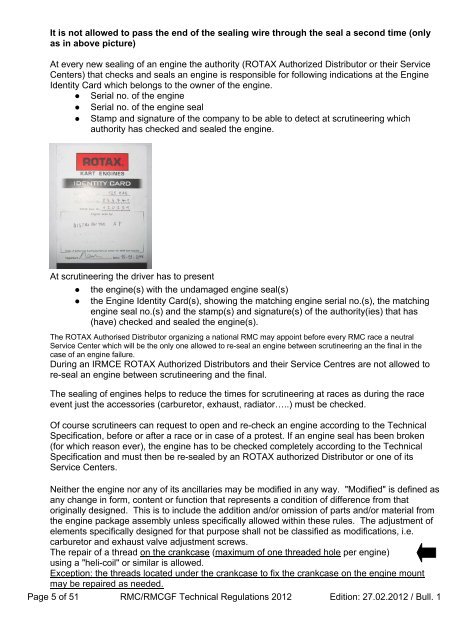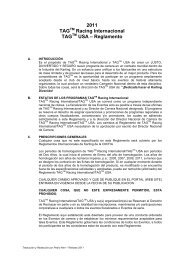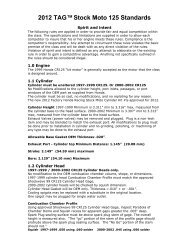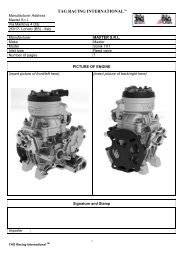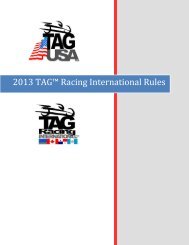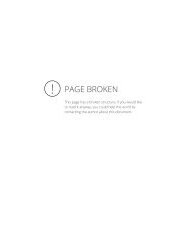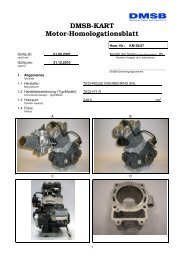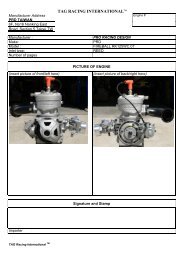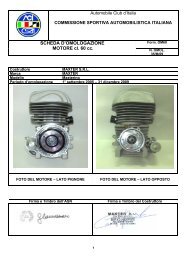ROTAX MOJO MAX Challenge Technical Regulations ... - The FMSCI
ROTAX MOJO MAX Challenge Technical Regulations ... - The FMSCI
ROTAX MOJO MAX Challenge Technical Regulations ... - The FMSCI
Create successful ePaper yourself
Turn your PDF publications into a flip-book with our unique Google optimized e-Paper software.
It is not allowed to pass the end of the sealing wire through the seal a second time (only<br />
as in above picture)<br />
At every new sealing of an engine the authority (<strong>ROTAX</strong> Authorized Distributor or their Service<br />
Centers) that checks and seals an engine is responsible for following indications at the Engine<br />
Identity Card which belongs to the owner of the engine.<br />
● Serial no. of the engine<br />
●<br />
●<br />
Serial no. of the engine seal<br />
Stamp and signature of the company to be able to detect at scrutineering which<br />
authority has checked and sealed the engine.<br />
At scrutineering the driver has to present<br />
● the engine(s) with the undamaged engine seal(s)<br />
● the Engine Identity Card(s), showing the matching engine serial no.(s), the matching<br />
engine seal no.(s) and the stamp(s) and signature(s) of the authority(ies) that has<br />
(have) checked and sealed the engine(s).<br />
<strong>The</strong> <strong>ROTAX</strong> Authorised Distributor organizing a national RMC may appoint before every RMC race a neutral<br />
Service Center which will be the only one allowed to re-seal an engine between scrutineering an the final in the<br />
case of an engine failure.<br />
During an IRMCE <strong>ROTAX</strong> Authorized Distributors and their Service Centres are not allowed to<br />
re-seal an engine between scrutineering and the final.<br />
<strong>The</strong> sealing of engines helps to reduce the times for scrutineering at races as during the race<br />
event just the accessories (carburetor, exhaust, radiator…..) must be checked.<br />
Of course scrutineers can request to open and re-check an engine according to the <strong>Technical</strong><br />
Specification, before or after a race or in case of a protest. If an engine seal has been broken<br />
(for which reason ever), the engine has to be checked completely according to the <strong>Technical</strong><br />
Specification and must then be re-sealed by an <strong>ROTAX</strong> authorized Distributor or one of its<br />
Service Centers.<br />
Neither the engine nor any of its ancillaries may be modified in any way. "Modified" is defined as<br />
any change in form, content or function that represents a condition of difference from that<br />
originally designed. This is to include the addition and/or omission of parts and/or material from<br />
the engine package assembly unless specifically allowed within these rules. <strong>The</strong> adjustment of<br />
elements specifically designed for that purpose shall not be classified as modifications, i.e.<br />
carburetor and exhaust valve adjustment screws.<br />
<strong>The</strong> repair of a thread on the crankcase (maximum of one threaded hole per engine)<br />
using a "heli-coil" or similar is allowed.<br />
Exception: the threads located under the crankcase to fix the crankcase on the engine mount<br />
may be repaired as needed.<br />
Page 5 of 51 RMC/RMCGF <strong>Technical</strong> <strong>Regulations</strong> 2012 Edition: 27.02.2012 / Bull. 1


